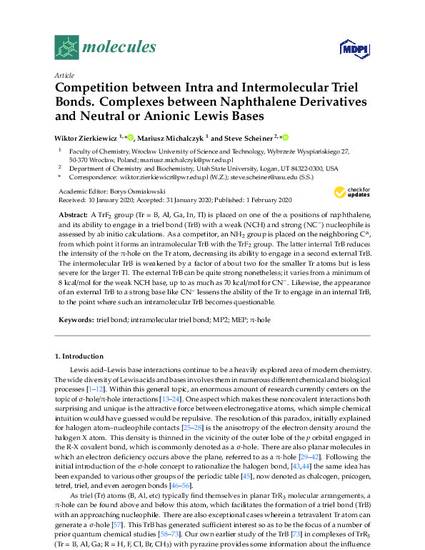
A TrF2 group (Tr = B, Al, Ga, In, Tl) is placed on one of the α positions of naphthalene, and its ability to engage in a triel bond (TrB) with a weak (NCH) and strong (NC−) nucleophile is assessed by ab initio calculations. As a competitor, an NH2 group is placed on the neighboring Cα, from which point it forms an intramolecular TrB with the TrF2 group. The latter internal TrB reduces the intensity of the π-hole on the Tr atom, decreasing its ability to engage in a second external TrB. The intermolecular TrB is weakened by a factor of about two for the smaller Tr atoms but is less severe for the larger Tl. The external TrB can be quite strong nonetheless; it varies from a minimum of 8 kcal/mol for the weak NCH base, up to as much as 70 kcal/mol for CN−. Likewise, the appearance of an external TrB to a strong base like CN− lessens the ability of the Tr to engage in an internal TrB, to the point where such an intramolecular TrB becomes questionable.
